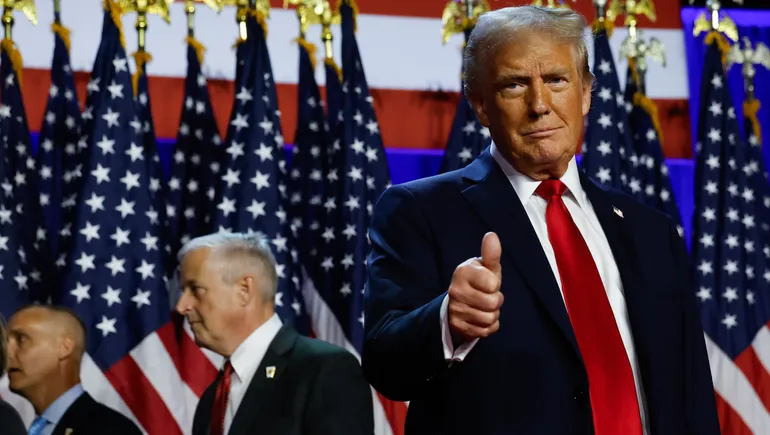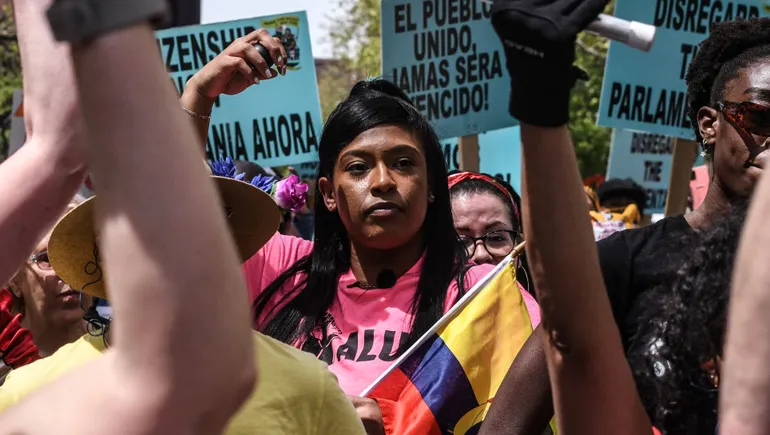Is it ever a “good thing” when diversity, equity and inclusion are in the news daily? Particularly since 2020, the answer to that remains to be seen.
This summer was quite eventful for DEI: First, SHRM renamed its DEI function, dropping “equity”; then, Microsoft laid off two redundant DEI employees, which was mischaracterized as a complete equity and inclusion function elimination. And amid all of this, a conservative activist was digging into major companies’ DEI commitments and asking them to recant — or else face a boycott.
But where does that leave the future of DEI, heading into 2025?
A summer of dismantling
July was jam-packed: Shortly after a Tractor Supply announcement, John Deere made a public statement about moving away from all “social or cultural awareness” events.
Then, after a month-long campaign from Robby Starbuck — one of the catalysts for these rollbacks — Harley-Davidson announced a DEI pullback. It stated on X that it had not operated a DEI function since April 2024. The maker of Jack Daniel’s followed suit, voicing similar changes to its talent strategy. Ford and Molson Coors also announced shifts to their DEI strategies, which Starbuck counted among his wins.
Running concurrently to the corporate rollbacks, the University of Kentucky and the University of North Carolina disbanded their DEI centers and reassigned employees. These decisions were birthed from concerns regarding the 2023 Supreme Court decision that ended race-based admissions — as well as heat from conservative lawmakers.
Bridging the understanding gap for consumers
A 2024 report from Morning Consult indicated that gender, age and political party affect how an individual sees the role of DEI at work. The report also suggested these identities factor into whether an individual has heard about DEI rollbacks at all.
An inverse of X-fueled backlash that lead to inclusion programming cuts is the finding that 8 in 10 LGBTQ+ people said they would boycott a company that decommitted from DEI. This finding was gathered by the Human Rights Campaign, an organization whose Corporate Equality Index had often been the subject of this summer’s online attacks and internal memos. Many companies announced they would no longer be participating in said index.
When it comes to communicating the value of internal DEI commitments to the external world, Donnebra McClendon, global head and VP of diversity, equity, and inclusion at Dayforce, said it’s crucial to understand what consumers and shareholders want to see from companies. “Typically, they want to see innovation,” she said. “They want to see profitability and growth.”
“We know that DEI are drivers in both of those things. It’s going to help to drive innovation. You’re going to get better products. You’re going to have greater thought leadership for solving problems,” said McClendon.
When it comes to bridging the gap, data can help tell that story, she said.
“But here’s a tricky thing about data. You typically can’t get data overnight, so it takes time to build that up, right? So you have to be able to tell your story along the way,” McClendon said.
Debunking the reverse racism myth
One misconception can be that diversity and equity initiatives are forms of discrimination or “reverse racism.”
To that, Jennifer Martinez, CDEIO and partner at Hanson Bridgett, said, “What exactly do people think is racist? That we treat people equitably? That we want our employees to feel included? That we recognize the value in having a diverse workforce? I’m not sure which part is the racist part among those.”
Furthermore, Martinez said, “the idea that DEI initiatives are racist, they’re quotas or they’re lowering standards is a fundamental misunderstanding of what DEI programs actually are. I might go so far as to say an intentional misrepresentation.”
With race and other kinds of identity, Martinez suggested resources created for one particular identity group can often broadly benefit everyone.
Take the Americans with Disabilities Act, for example: “It’s intended to acknowledge that people in that group face certain biases and certain barriers to public accommodations and to workplaces,” she said, but it has to potential to create resources that could benefit everyone. Martinez cited curb cuts in sidewalks for wheelchair users that also benefit parents pushing strollers.
“I think that’s what most DEI initiatives are,” she said.
The future of DEI
When asked about the state of DEI following a summer of rollbacks, McClendon says she is “cautiously optimistic.”
Acknowledging the power of DEI programs in action, she said, “people’s perspectives are changing. I think it’s important for us to be aware of that as we do the work.”
McClendon explained that she understands why these readjusted commitments happen. “I think a lot of organizations jumped out of the gate feeling high-strung about these commitments. Now we’ve had a few years to see the impact of those commitments, and maybe it’s time to reevaluate,” she said.
“Again, I am an advocate. This is the work that I love,” McClendon said. “But understanding the scope of the work is not a bad thing at all.”
Regarding the rollbacks, Judy Ellis, SVP, global diversity, equity, inclusion and belonging at AMS expressed concern. Still, Ellis said, what she’s seen in most, if not all, of her global clients is that they are very much committed to diversity and inclusion.
“They understand that DEI initiatives have really profound long-term impacts on their potential workforce composition,” Ellis said. “That matters because having all the best and brightest available talent allows them to meet the needs of their organization’s consumers. They see it as really a strategic business imperative, so they are continuing their efforts.”
Ellis’ global perspective makes her see things differently: she emphasized the regional differences in diversity focuses. For example, workers in the UK tend to focus on disability inclusion and neurodiversity, as well as generational diversity. Clients in Latin America, she said, have “less diversity maturity, I would say, than the U.S. and some of our other clients,” but are focused on establishing gender parity in the C-suite.
The U.S. remains focused on race and ethnicity, she observed. “I see it still on the corporate agenda of clients; however, they are pivoting and ensuring that they’re in compliance,” Ellis said.
Pro-tip: “Pack a lunch.”
The name of the game may be endurance.
“When I started in the organization, specifically in this particular role, I would often tell people, listen, pack a lunch, it’s going to take us some time,” McClendon said, re-emphasizing that data gathering, storytelling and organizational culture changes require time.
She observed that many people, in recent years, joined the DEI space without a strong concept of what the work would entail. “I think back to the unconscious bias trainings that were literally a dime a dozen,” she said. “But what’s next? What happens after we’ve done all of those things and we’re still not necessarily seeing the monumental changes that we’re looking for at an organization?”
“That’s not the time to run,” she said. “It’s time to double down on the fact and understanding that culture shifts take time.”




Leave a Reply